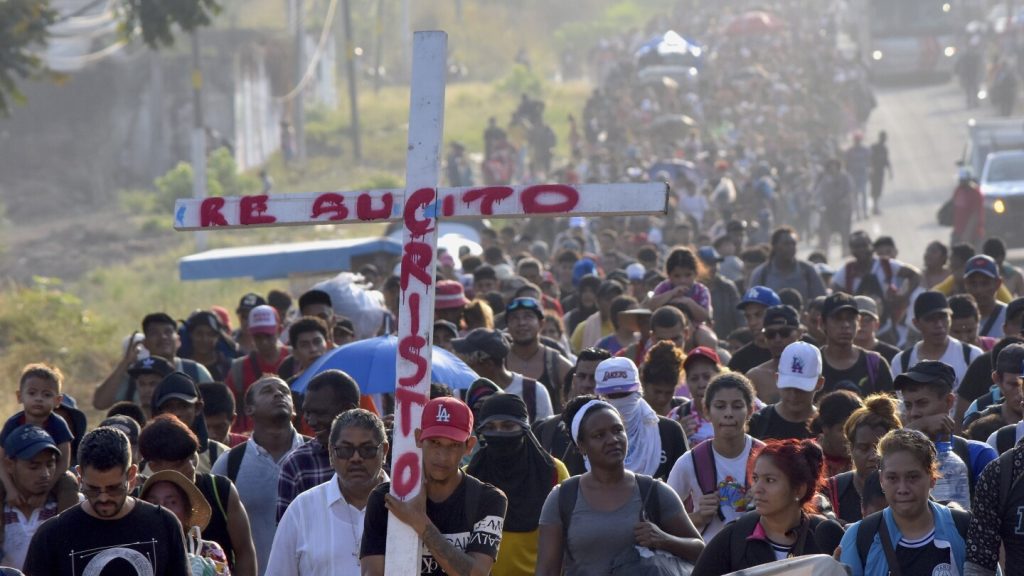A group of around 2,000 migrants began a journey from Tapachula, Mexico, near the Guatemalan border, as a traditional demonstration during Holy Week before Easter to bring attention to the challenges they face. These migrants and their advocates aimed to reach Mexico’s capital to shed light on the dangers migrants face, including robberies, sexual assaults, extortion, and kidnapping. Due to Mexico’s containment strategy, migrants often find themselves stuck in southern Mexico, far from the U.S. border, where they struggle to regularize their status through asylum or other means. Many migrants in this region face a lack of job opportunities and carry significant debts to smugglers.
Guatemalan migrant Daniel Godoy, who had been waiting in Tapachula for four months to regularize his status, joined the walk with his wife and two children. Despite the uncertainty surrounding his legal status, he decided to embark on the journey to Mexico’s capital with his family. Reverend Heyman Vázquez Medina, a member of the Catholic Church’s human mobility effort, criticized Mexico’s immigration policy, noting the government’s slow process in granting legal status to migrants and denying them access to public transportation while allowing them to trek exhausting distances on highways. This situation raises concerns about the hardships migrants face during their journey.
The Mexican government has been facing pressure from the Biden administration to control the flow of migrants to the U.S. border. In February, the U.S. Border Patrol encountered migrants 140,644 times, an increase from 124,220 in January but lower than the nearly 250,000 encounters in December. This data reflects the ongoing challenges related to migration in the region, highlighting the need for coordinated efforts between Mexico and the United States to address the issues faced by migrants. The advocacy efforts of migrants and their supporters during the Holy Week demonstration underscore the urgency of addressing the root causes of migration and ensuring the safety and wellbeing of those seeking a better future.
As migrants continue their journey towards Mexico’s capital, the symbolic presence of a large white cross painted with the words “Christ resurrected” serves as a reminder of the religious aspect of their demonstration. The procession during Holy Week echoes the stations of the cross pilgrimage through the river that divides Guatemala and Mexico, emphasizing the spiritual significance of their journey. Despite the challenges and uncertainties ahead, migrants and their supporters remain determined to raise awareness about their plight and demand better treatment and opportunities for those seeking refuge and a better life. This demonstration reflects the resilience and perseverance of migrants in the face of adversity as they continue their march towards a safer and more secure future.


